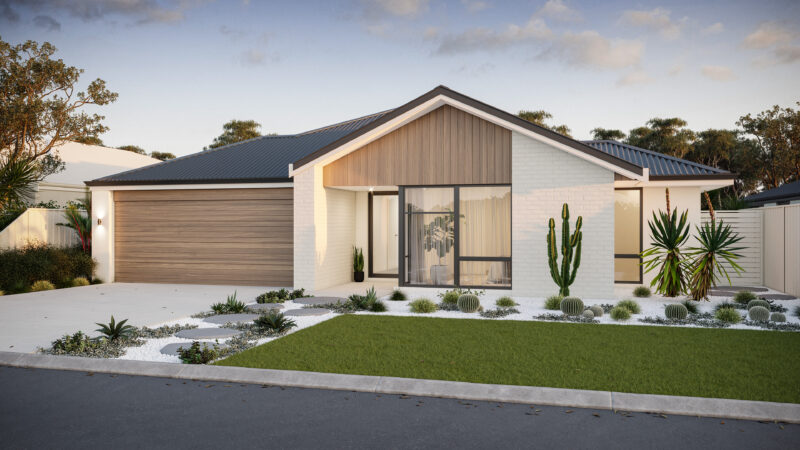Multigenerational living is on the rise all across Australia. Whether you’re looking to save money during tough economic times or wanting to forge closer ties with family, moving into a home as a family unit is growing in popularity.
Living in a multigenerational dwelling can offer people of all ages with a host of benefits. From pooling resources such as time and money to sharing household responsibilities and fostering generational bonds, the positives are clear
However, moving into a generational home doesn’t come without challenges. Trying to blend different families and generations into one house can lead to issues such as privacy concerns to space constraints.
While these drawbacks are very real concerns, there are some tips families can use to embrace multigenerational living as not only a fulfilling experience but also, a positive lifestyle choice.
Benefits
When it comes to multigenerational living, the benefits can be enjoyed by all involved. Children get the unique advantage of growing up with grandparents or aunts and uncles. Working mums and dads are able to have in-house childcare options and retirees can manage the current cost of living.
Shared expenses
One of the most important benefits of multigenerational living is the fact that expenses can be shared. With this in mind, rather than having to bear the full cost of purchasing a house, the utilities, and grocery bills, everything is apportioned, helping your money go further.
Emotional support
Another key benefit of multigenerational homes is the fact that emotional support can easily be provided. With multiple family members under one roof, someone will always be around to provide everything from companionship and guidance to support.
Childcare and elderly support
Living in a multigenerational home affords individuals with live-in care. This care could be geared towards looking after small children while their parents are at work. This care could also be young adults looking after their grandparents so that care can be kept in the family.
Shared responsibilities
As the saying goes, many hands make light work. With a household of numerous adults or young adults, responsibilities can easily be distributed. This way, the fridge can be stocked and the floors can be cleaned without making one family member carry the full burden alone.
Drawbacks
While there are many benefits to multigenerational living, there are also some drawbacks that should be considered. Experiencing these negatives can often feel overwhelming, however, it’s important to remember that there are solutions to most perceived problems.
Privacy concerns
One such drawback of multigenerational homes is the fact that finding a moment for privacy might prove difficult. To counter this, consider employing a home design where each family within the broader family has a wing or specific area where they can retreat.
Generational differences
People from different generations have different thoughts about the world based on lived experiences. These varied perspectives have the potential to cause conflict. Perhaps a family rule should be no political talk around the dinner table unless differences can be accepted.
Space constraints
Housing multiple people under one roof can sometimes feel a little limiting in terms of space. To minimise overcrowding, consider having bigger living and dining spaces – so-called gathering spaces – so that when everyone comes together it doesn’t feel so cramped.
Our Tips For Harmonious Living
Living in a multigenerational home can be a beneficial experience for everyone from kids to grandparents. To make the most of this largely positive experience, there are tips that people of all ages can use to navigate the growing pains that often appear when merging multiple households into one.
1. Establish clear communication channels
When living with multiple people, no matter if they are family or friends, certain situations may arise. To ensure that everyone feels respected and heard, you could implement some rules that help foster open and honest communication.
One such rule might be instigating a weekly family meeting where concerns can be readily addressed instead of leaving them to build and build. Another rule could revolve around having a family group chat so that Dad doesn’t cook dinner only to have Mum come home with a takeaway in hand.
2. Define personal space
For some multigenerational households privacy is a real concern. To help ensure that you can feel comfortable in your own home, consider allocating specific spaces in the house to each family member. With a designated place to relax, the stresses of the day easily melt away.
3. Celebrate generational differences
Rather than letting generational differences cause a divide, celebrate them. Once a month you might have an activity day where a certain member of the family can share their passions with the rest of the family unit. By planning activities like going to a dinosaur museum or attending a scrapbooking class, understanding and connection can develop.
4. Create a shared financial plan
Money can often be a difficult subject to talk about. However, when living in a multigenerational home, it is paramount to have a monetary plan. This way, everyone knows what portion of the rent or mortgage they are required to pay.
A shared financial plan can also be a budget. With a budget in place that accounts for outgoing expenses such as paying utility bills, the family is better placed to understand how much money is left for things like groceries or subscription services.
5. Rotate household responsibilities
Resentment can form when one person is left in charge of loading the dishwasher, cleaning the shower, and emptying the bins. Each adult in a multigenerational home can be responsible for a certain activity, or a chart can be created to ensure that everything is being shared equally. A rotating roster also helps in relation to future-proofing should a grandparent be no longer able to walk upstairs with the vacuum.
6. Encourage independence
Being surrounded by a family unit at all times can cause people to stay in an environment that is comfortable. Whether a young person or young at heart, it’s important to still go out and indulge in the things that make you happy. This way, your independence isn’t lost.
7. Plan for quality time together
When living in a multigenerational home where everyone has their own space, sometimes different members of the family may feel disconnected. To ensure quality time, have days or nights where you sit together and watch a movie or play a board game. Sharing hobbies is a great way to both communicate and connect.
8. Seek professional guidance if needed
Some family dynamics are complex. To navigate the peaks and troughs, consider attending family counselling sessions. This doesn’t have to be a regular occurrence, you can keep going until you all have the tools and strategies needed to navigate life’s ups and downs together.
Living in a multigenerational home
From financial positives to relationship benefits, living in a multigenerational home is both a unique and fulfilling experience. Everyone from young children to grandparents can feel the benefits.
Not only are practical considerations such as childcare provided with in-house solutions but the foundation is laid for something more important. Namely, forging bonds with everyone from parents and grandparents to aunts and uncles that will last a lifetime.
To unlock the potential of multigenerational living, contact Plunkett Homes today or take the first steps toward a new lifestyle by finding inspiration in our comprehensive range of home design options.




